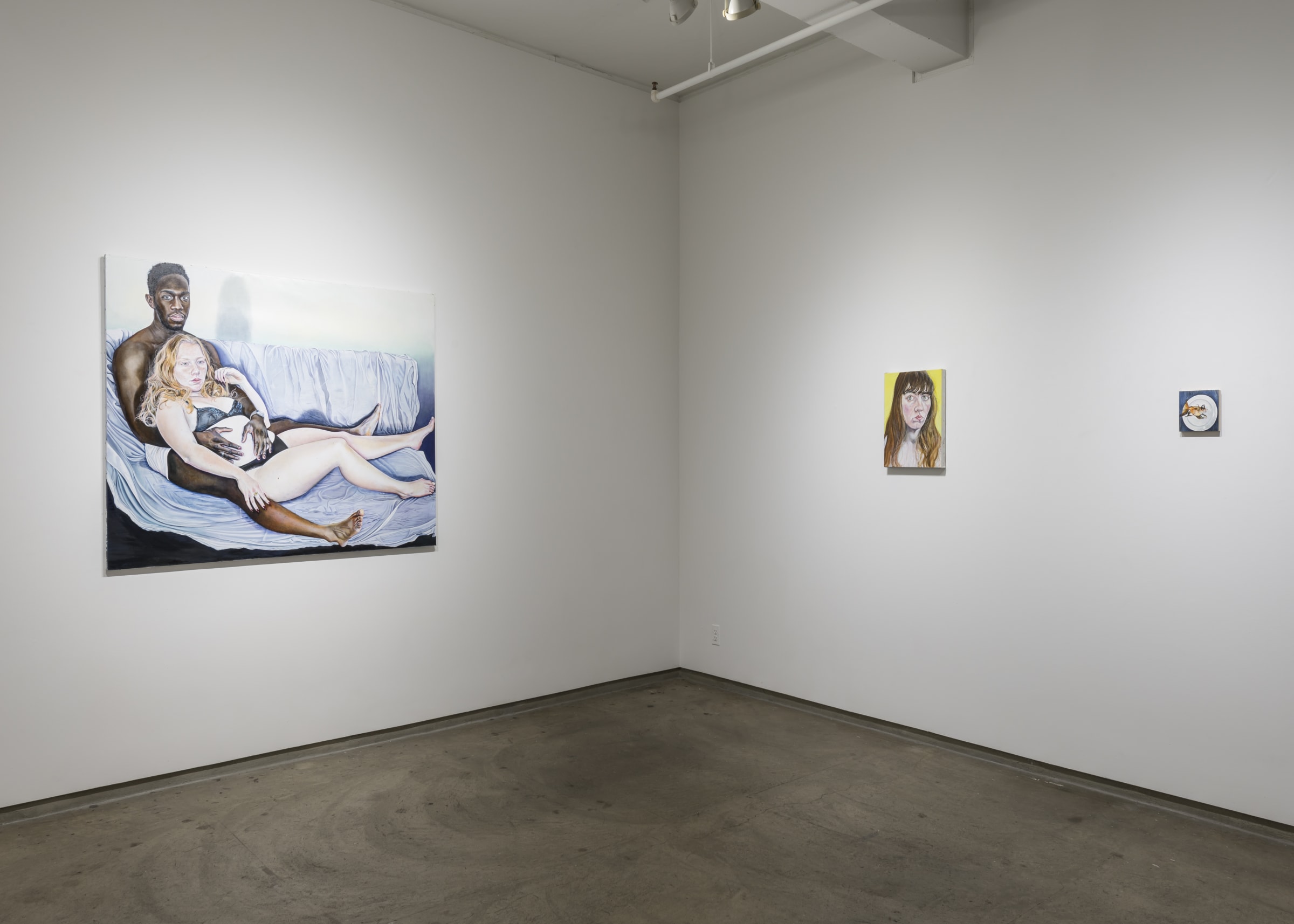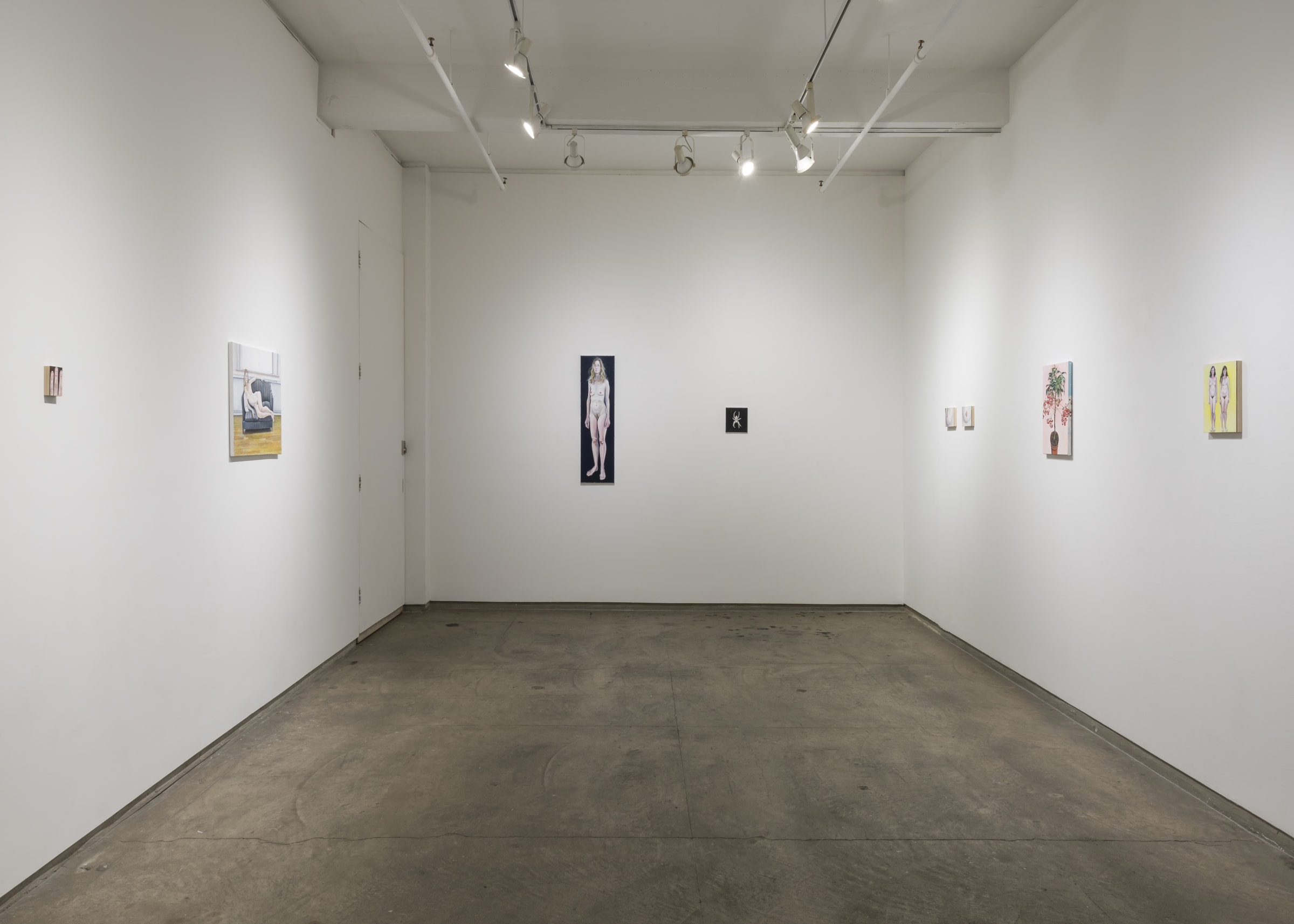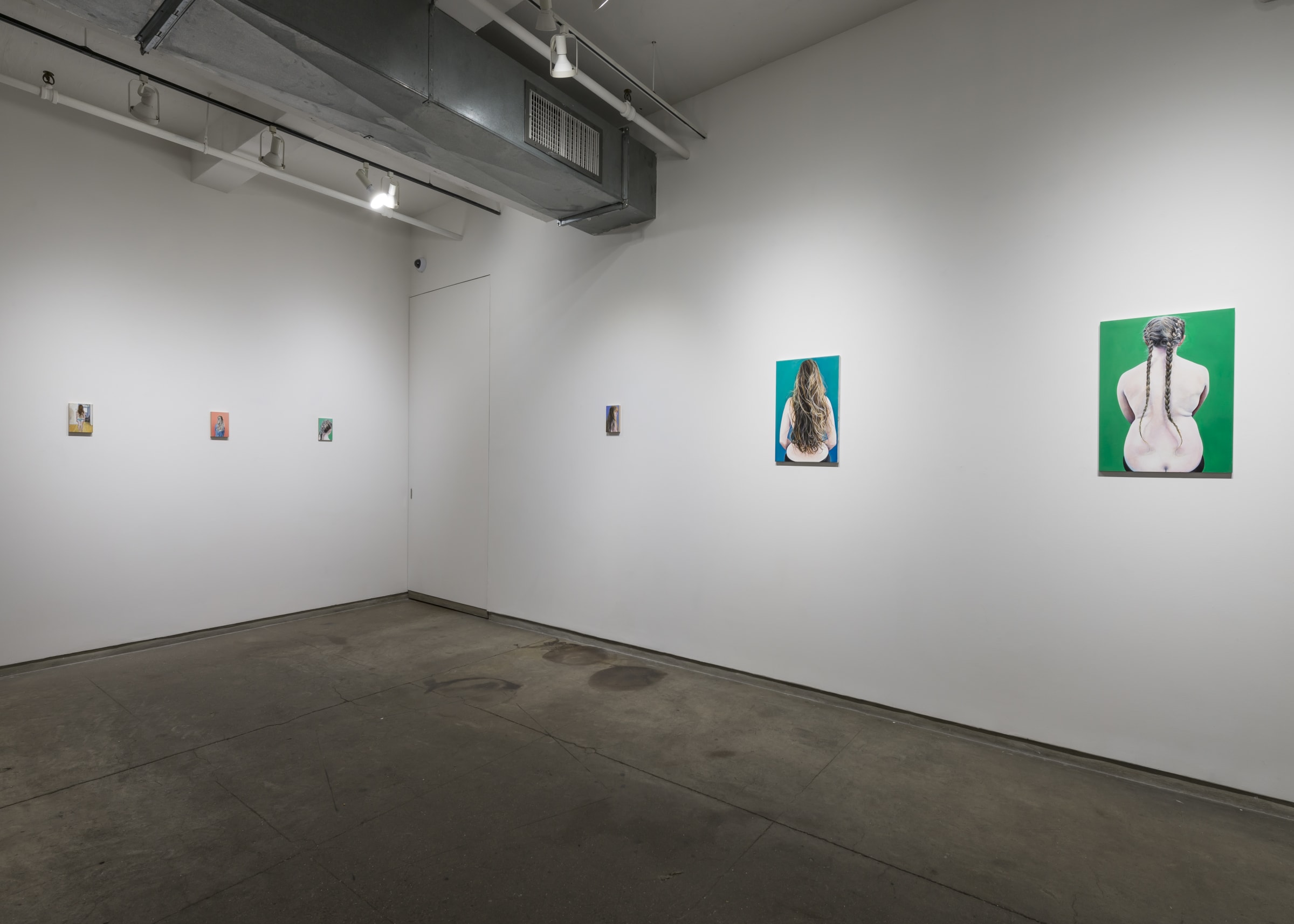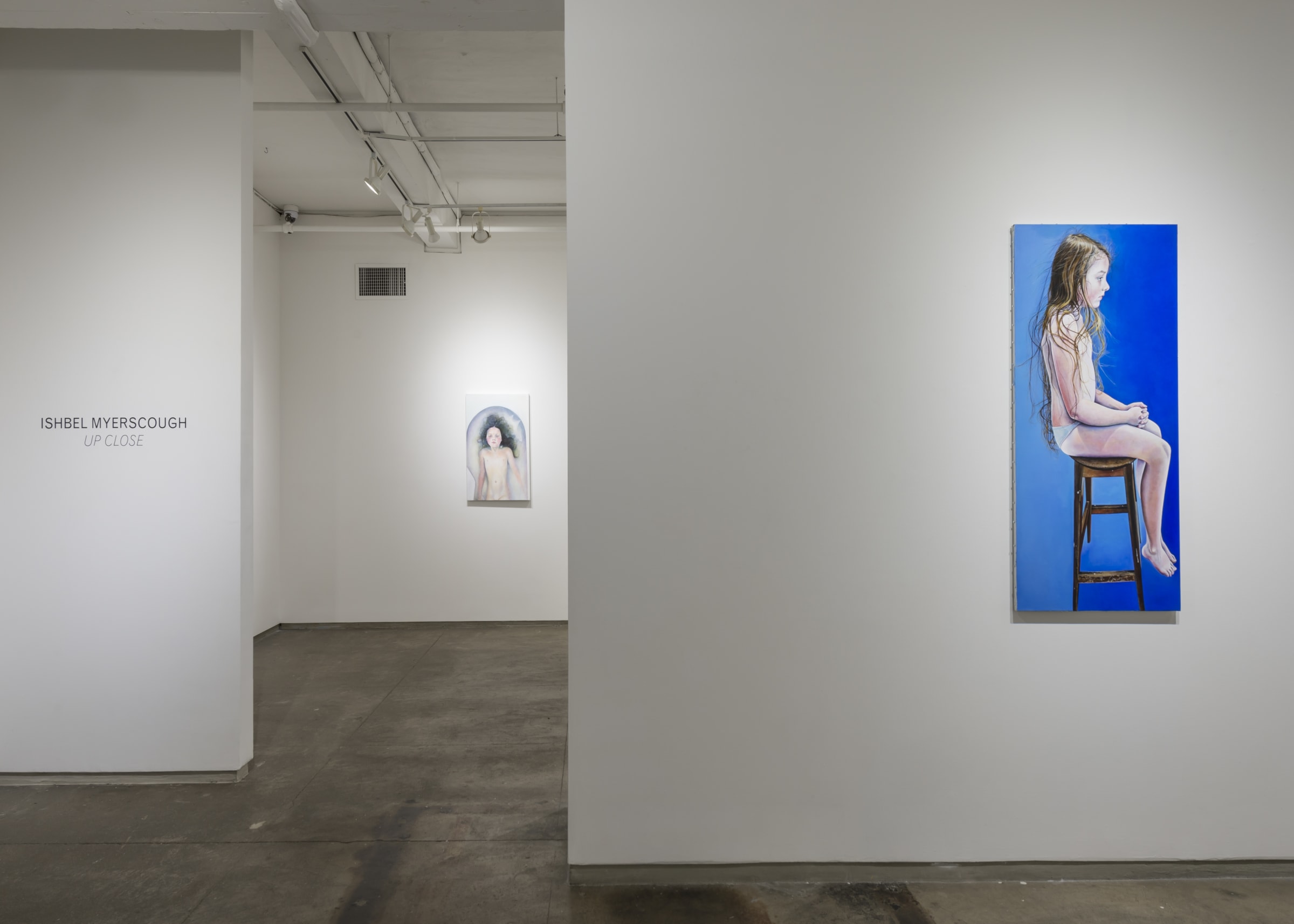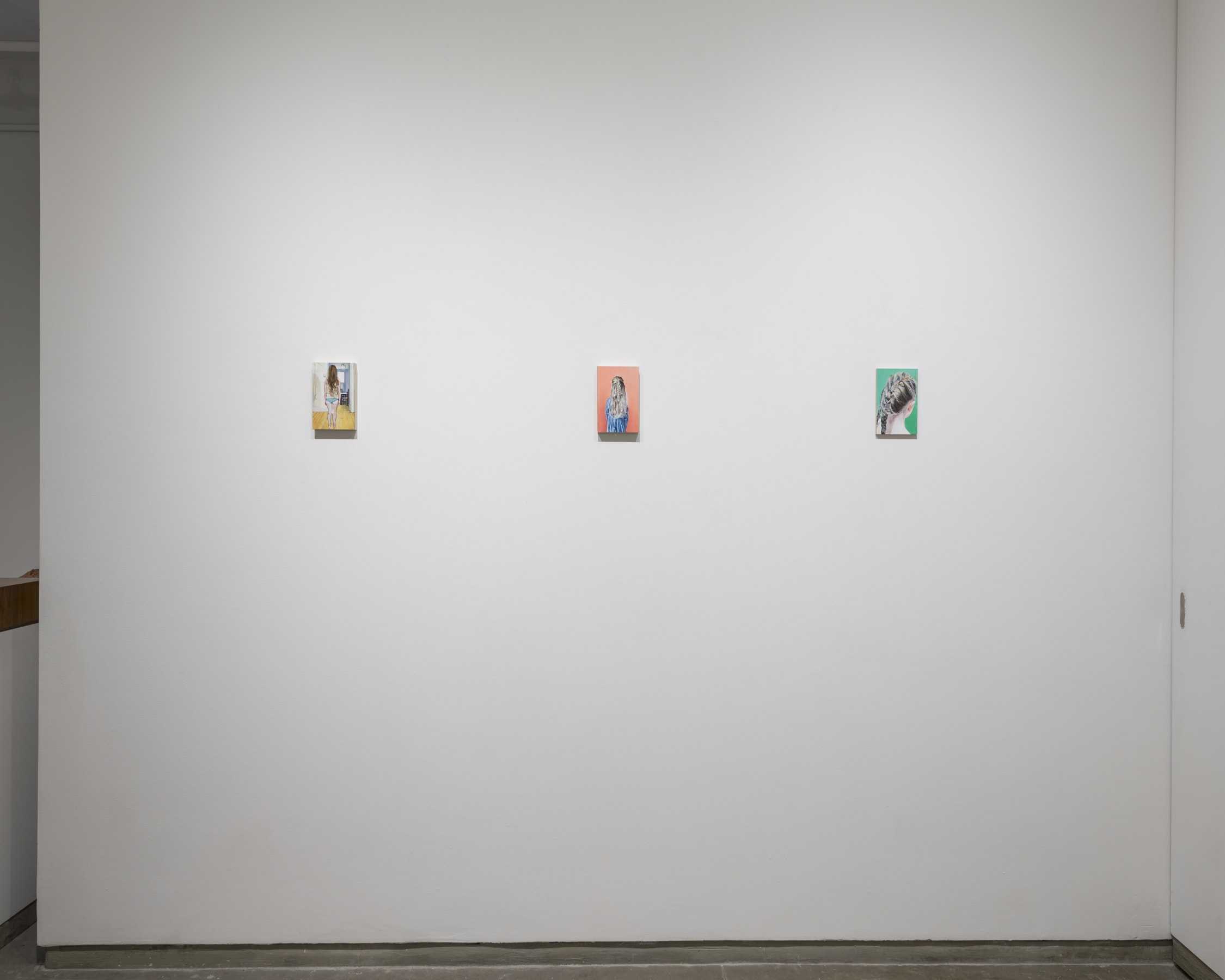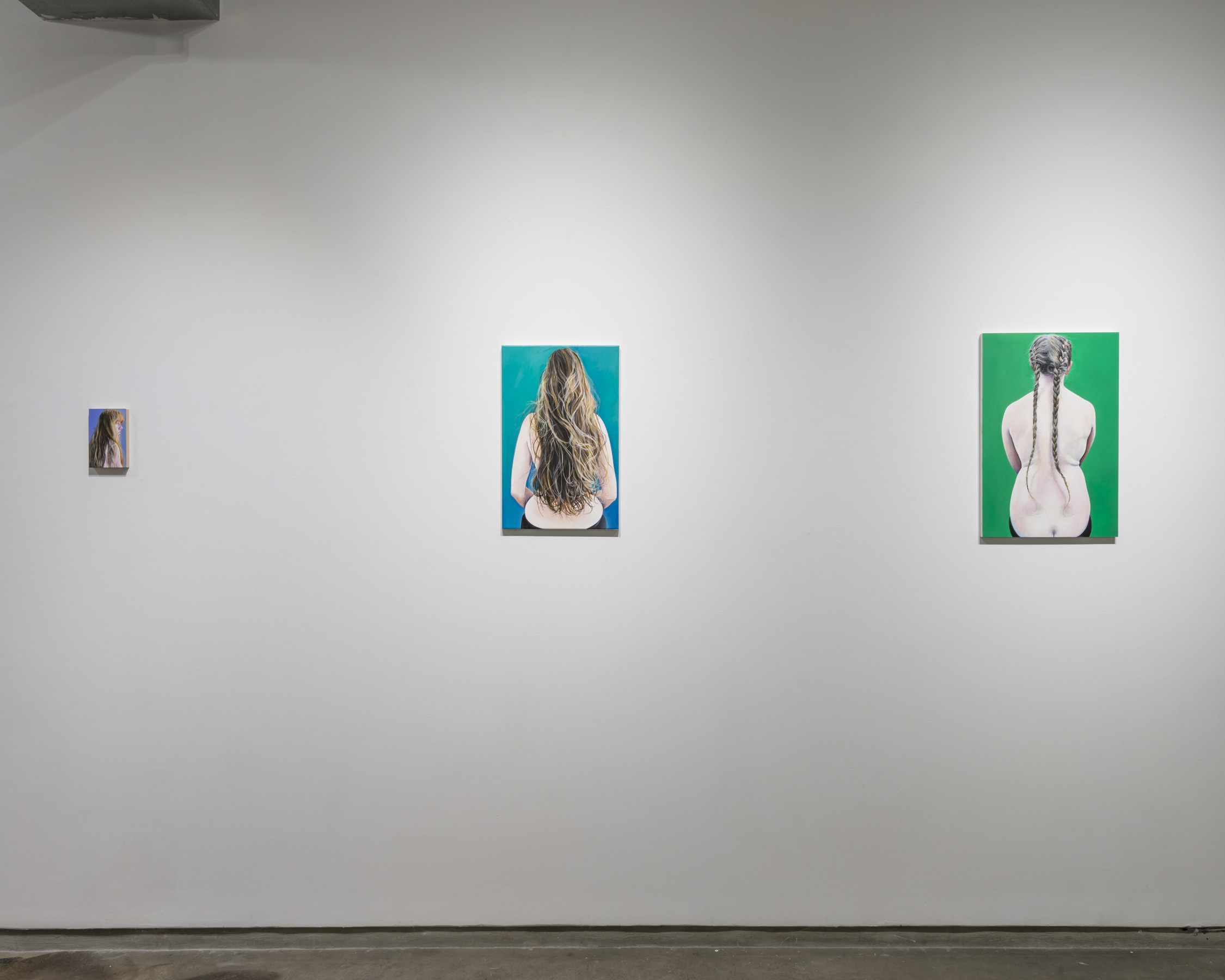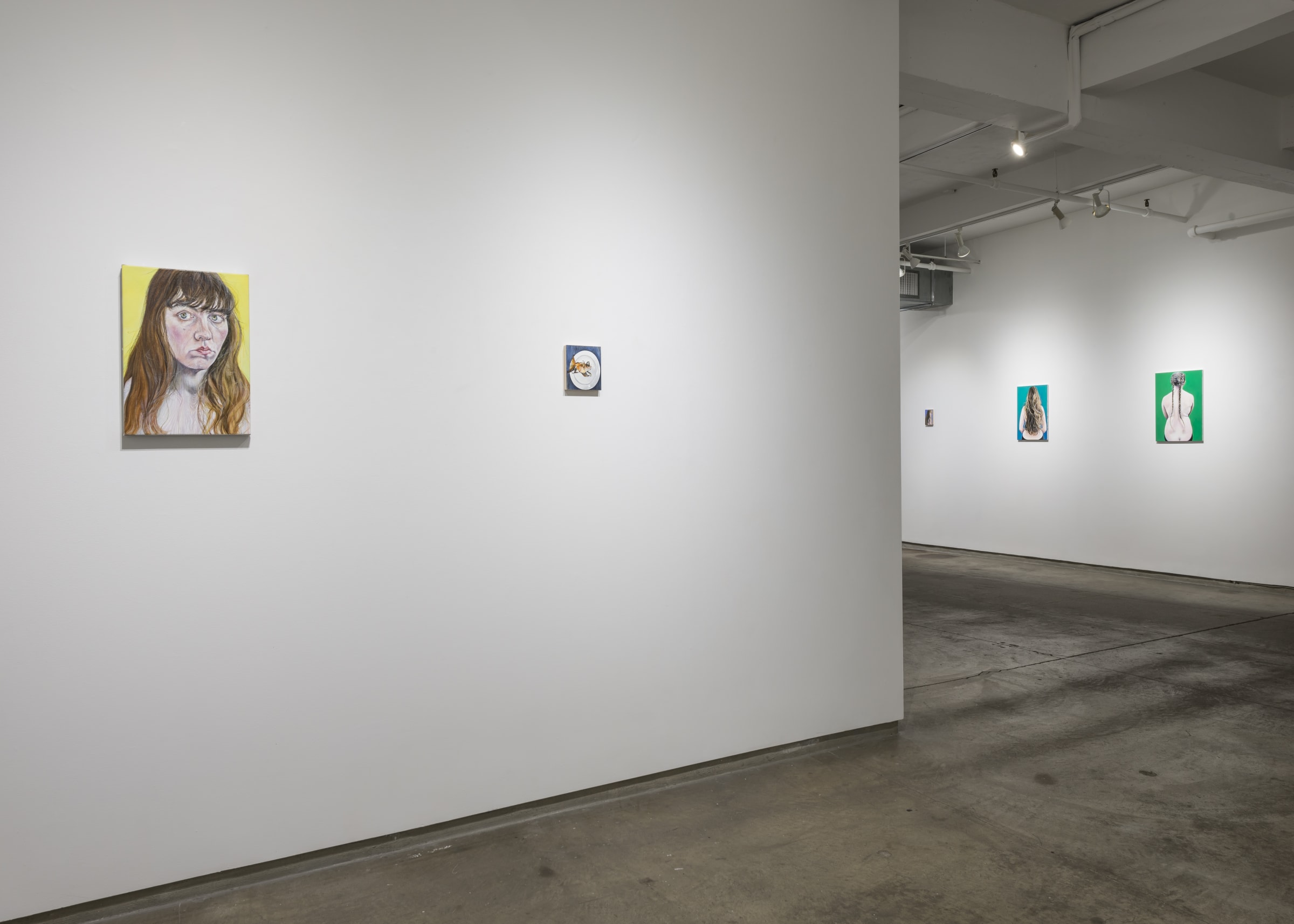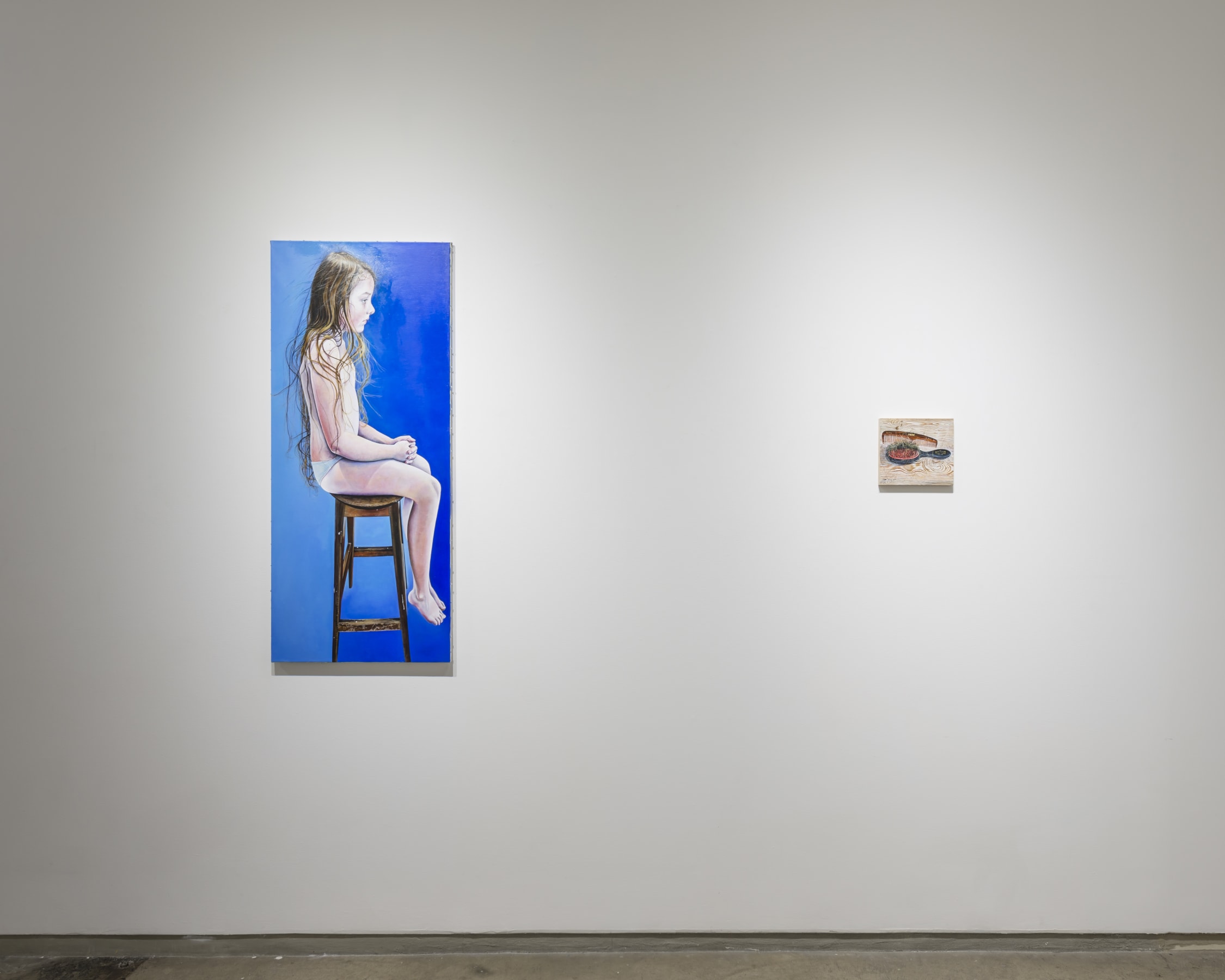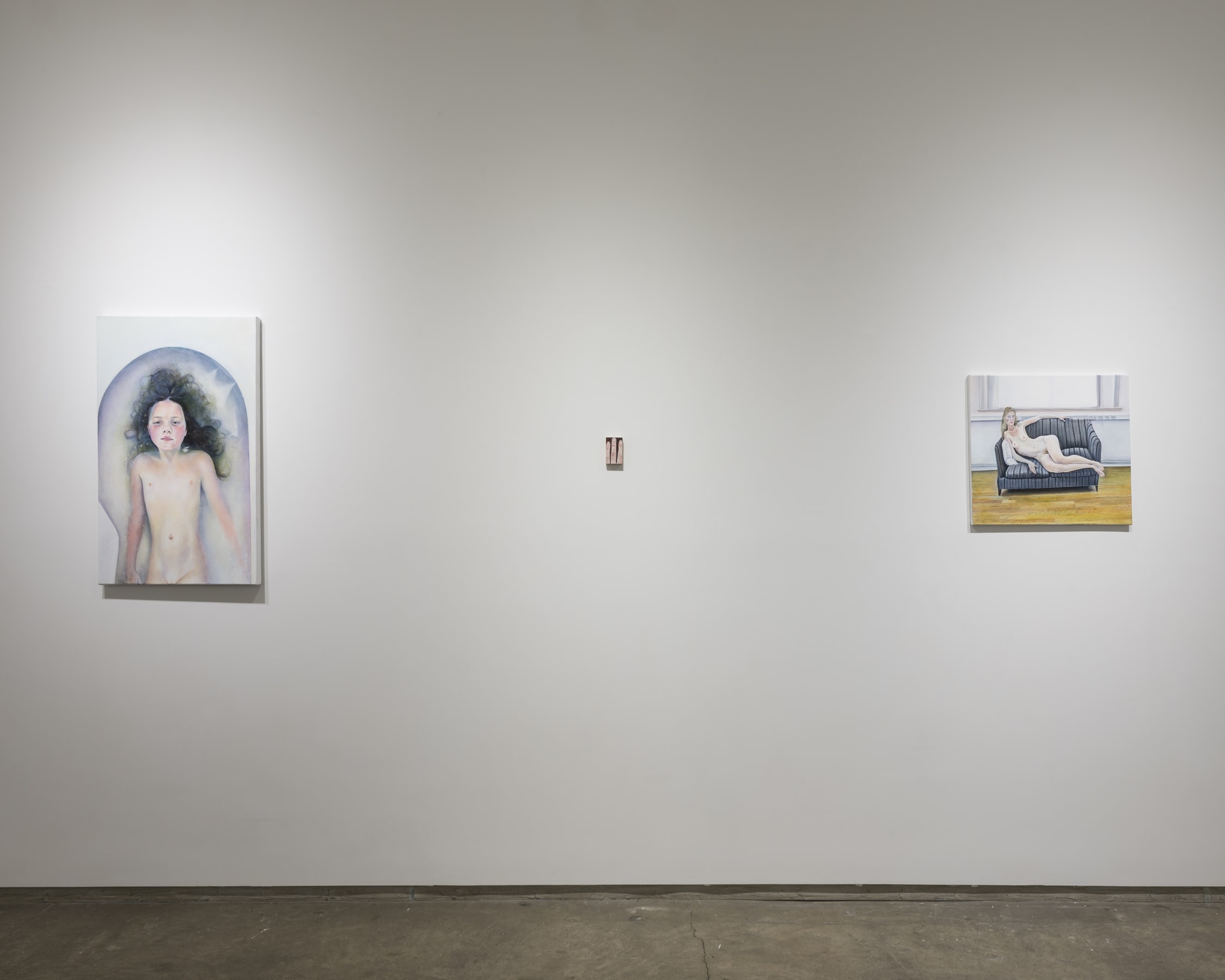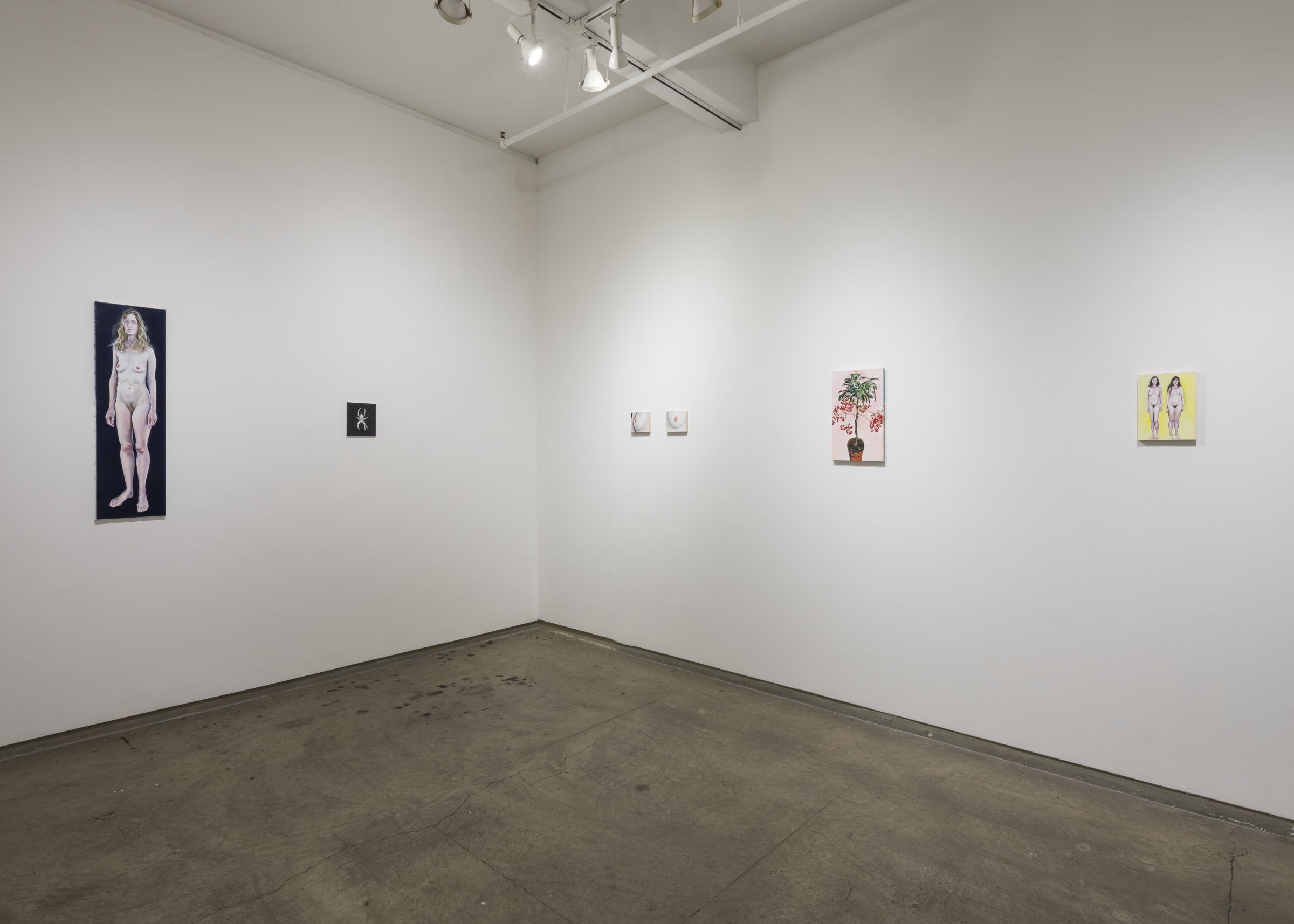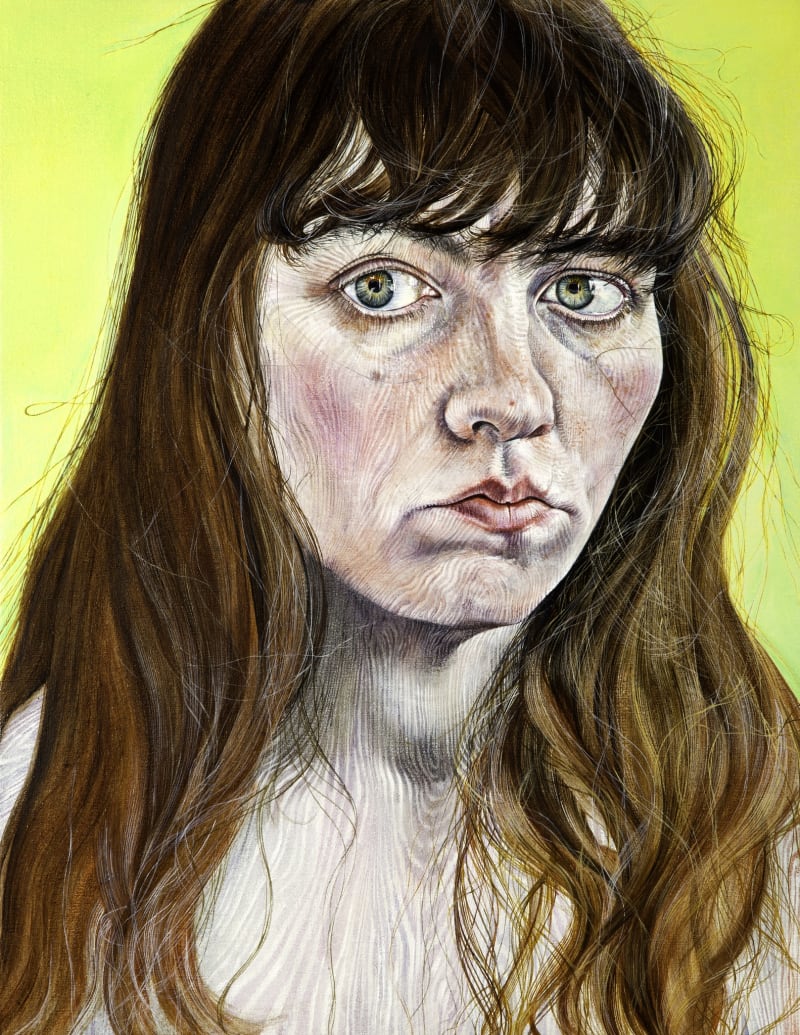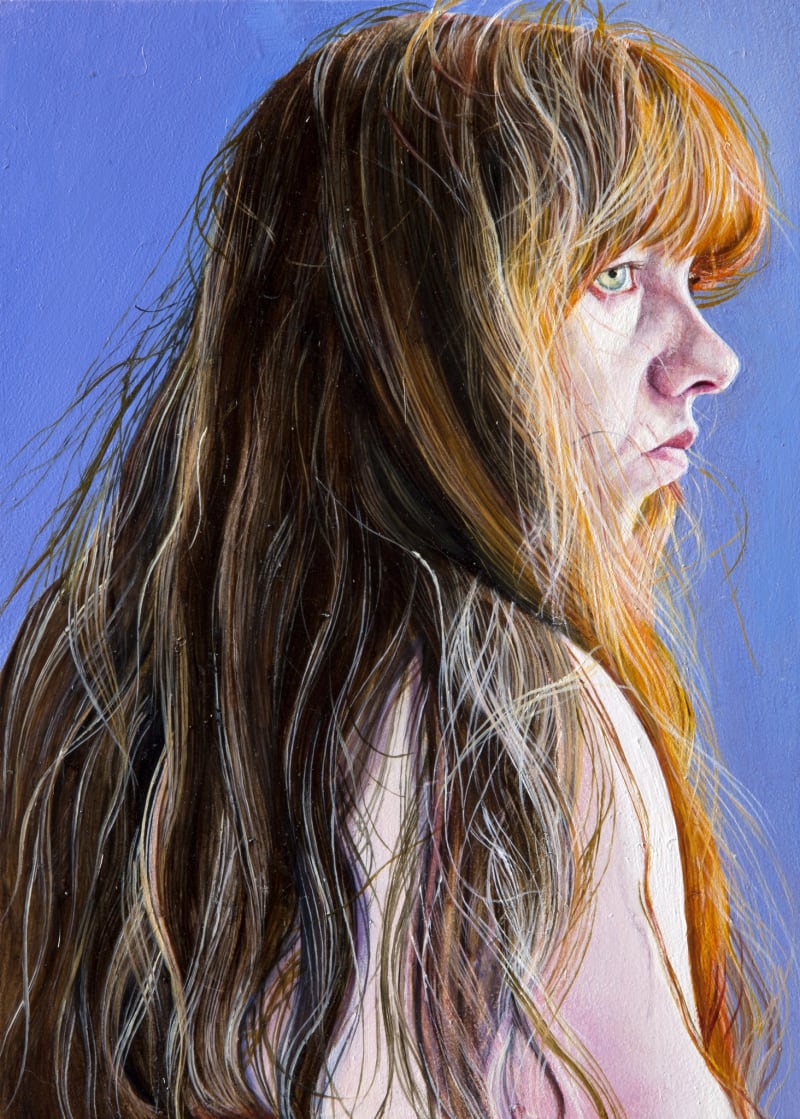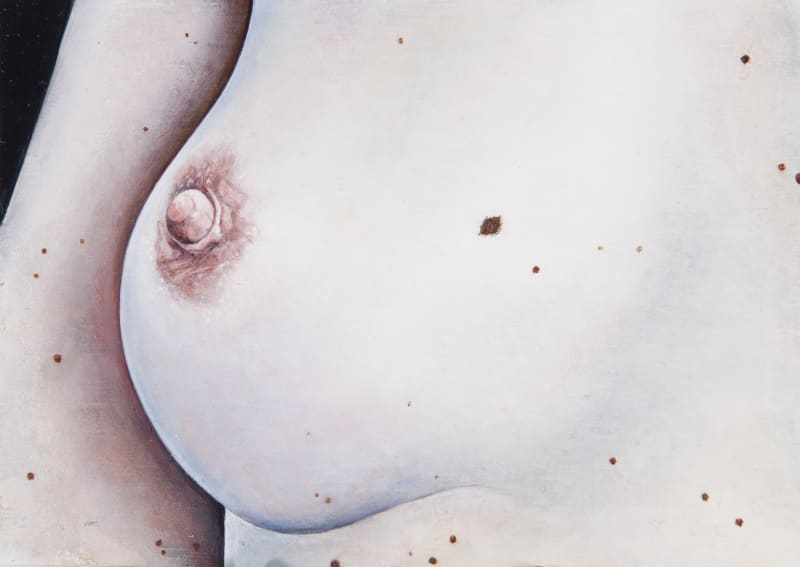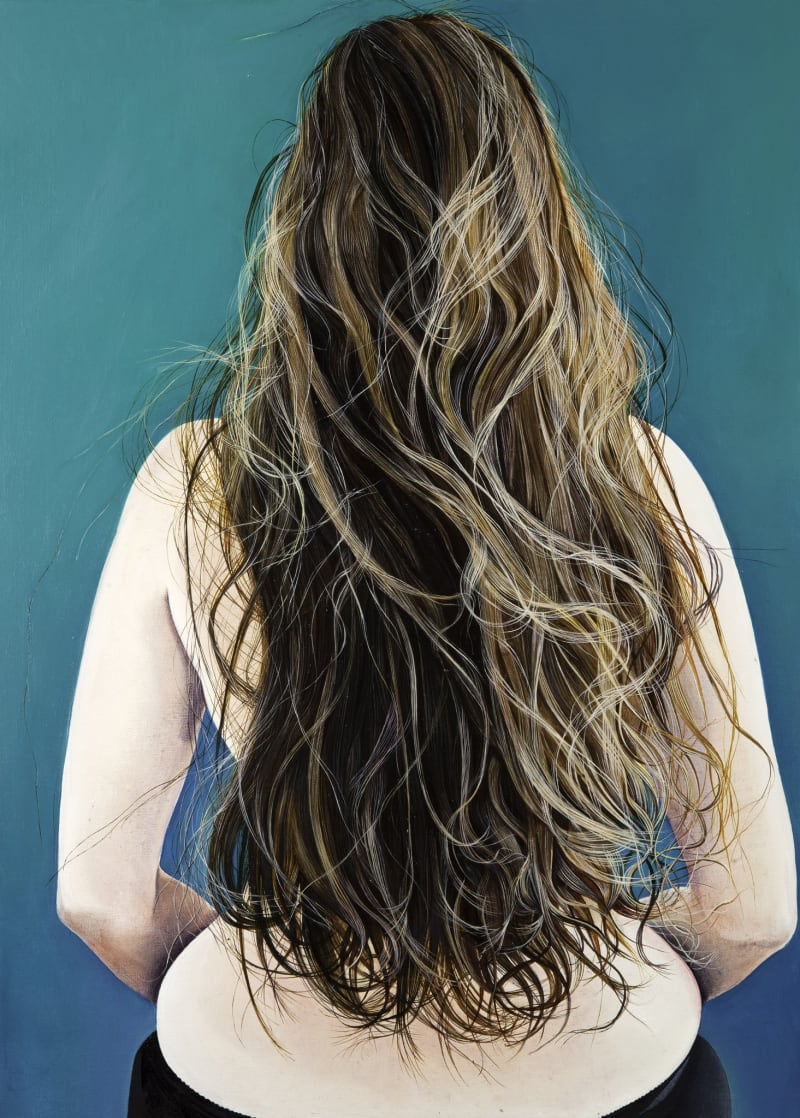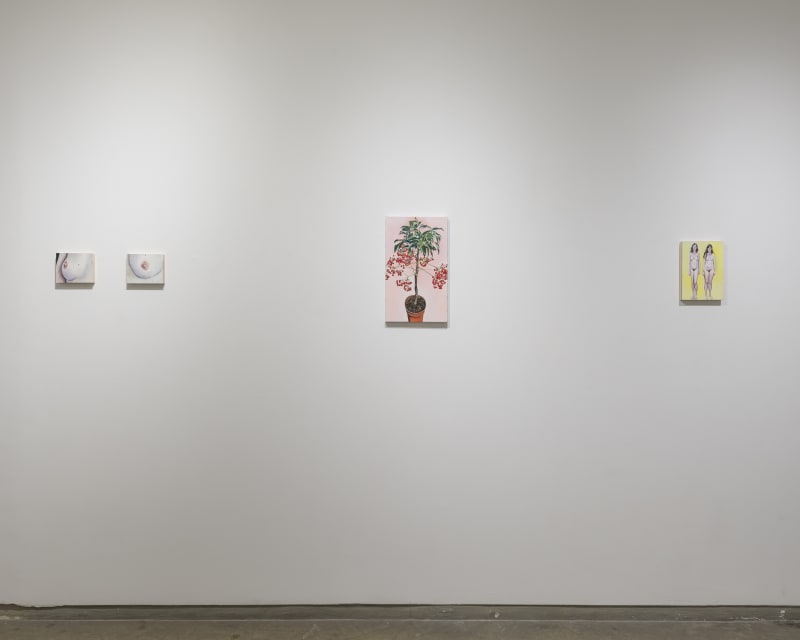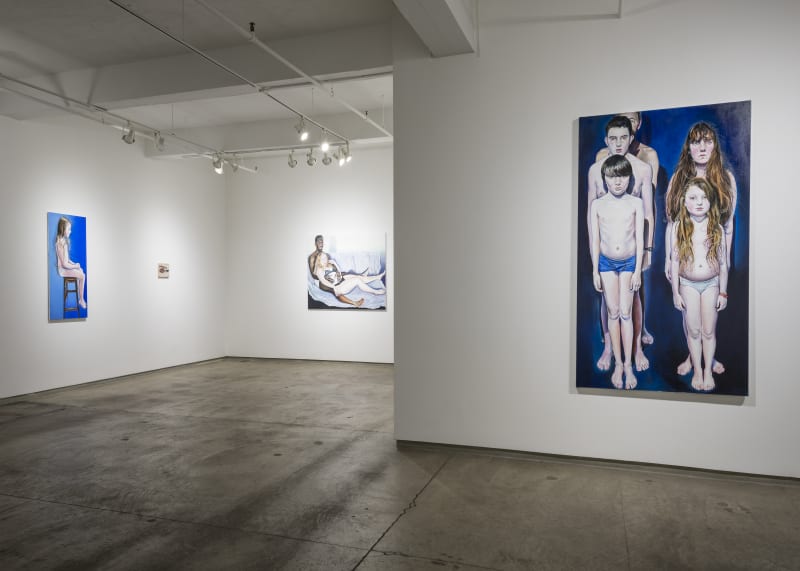Overview
The present selection of paintings can be seen as containers for an intensely personal experience of womanhood, beginning with images of childhood and culminating with recent self-portraits, interspersed with grouped or paired figures that address the relationships between family, lovers and friends.
Flowers Gallery is pleased to announce an exhibition of paintings by British artist Ishbel Myerscough, drawing together meticulously observed paintings of friends and family, self-portraits, and domestic still life arrangements.
Myerscough is known for her precisely rendered and frank portrayal of her subjects, which over the past three decades have included herself, her close friend and fellow artist Chantal Joffe, and their families. Curator Sarah Howgate has described Myerscough’s paintings as demonstrating a “clear, forensic vision”, capturing her own reflection in the mirror with unflinching honesty.1 Within her painstaking attention to detail, Myerscough sees, as she puts it, “the wider things reflected in even the smallest life you lead”.
The present selection of paintings can be seen as containers for an intensely personal experience of womanhood, beginning with images of childhood and culminating with recent self-portraits, interspersed with grouped or paired figures that address the relationships between family, lovers and friends. Myerscough’s particular inquiry of the nude has charted an evolving idea of self through the contemplation of form, evoking the longings and anxieties of female experience through discreet observations of physicality and gesture.
In several portraits of children, often viewed from the back, the level of scrutiny applied to each flyaway strand of hair and wrinkle of clothing suggests the intimacy of the maternal gaze, and yet there is also a sense that the subjects are resisting the discovery of their inaccessible, private worlds. In two paintings in which the back of the head is the focal point, Plaits and French Plait, the braids after which they are titled are unevenly woven, snaking haphazardly, with wisp-like tendrils unfurling as though making their escape from orderliness.
Hair in Myerscough’s paintings can be seen to hold symbolic value, invoking the essence of the individual, or offering refuge and disguise. Often wayward and unruly, such as in the self-portrait Long Hair, the labyrinthine entanglements shield the self from others. This is taken further in another painting titled Self Portrait, in which the pelt-like shock of auburn hair, streaked with silver, is ungroomed and worn overly-long, almost entirely covering the face and body. Myerscough examines the intricate details of each strand with the same focused attention paid to the nuances of flesh tone or gestures of the body, as though following the thread of a story to unravel the personal narrative.
The recent painting Untitled (hairbrush & comb), in which residual knots and tangles of hair appear disengaged from the figure, draws associations with loss, anxiety, ill health and aging. This focus on shedding or casting off of bodily matter can be seen to be rooted in the traditions of abject art, addressing the relationship between the public and private presentation of the body. In other still life arrangements, a goldfish floundering on a plate, and a spider spinning its web hint at the traditions of memento mori on a domestic scale. Despite the typically sparse composition, Myerscough pays equally lavish consideration to the fading whorls of woodgrain on the tabletop, as to the metallic sheen of the goldfish’s gills; similarly the shimmering light tracing the strands of a delicate web is balanced with the fibrous silhouette of the attendant spider, as though searching for meaning in the slightest of details.
The present selection of paintings can be seen as containers for an intensely personal experience of womanhood, beginning with images of childhood and culminating with recent self-portraits, interspersed with grouped or paired figures that address the relationships between family, lovers and friends.
